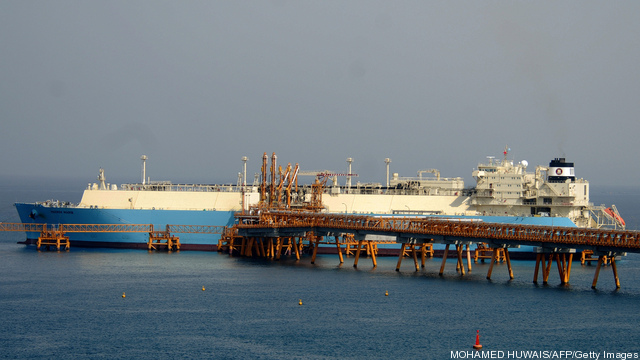
Exporting US natural gas could mean minimal price rises for consumers and a boost in jobs for the economy.
Or it could mean US prices soaring as volumes equaling a quarter of current consumption are shipped to foreign markets.
More likely, it will mean a bit of both, say analysts trying to figure out the effects if plans to initiate the first exports from the mainland US go forward.
Initially, consumers would see no change at all, said Kenneth Medlock, a fellow with the James A. Baker Institute for Public Policy. “The domestic supply is very robust,” he told a Brookings Institution seminar recently, with sufficient surplus production capacity that exporting a “reasonable amount” of liquefied natural gas will have “no effect” on US prices.
Above that surplus, estimates emerging from government and private studies indicate the US price effects will depend on both how much gas is exported and how fast exports grow.
There are currently no plants in the lower 48 states to liquefy natural gas for ocean shipment, but the Department of Energy has eight applications pending that involve converting LNG import terminals to liquefy and ship US gas to more profitable foreign markets.
Those are billion-dollar projects and no one expects them all to be built. Only one, Cheniere’s Sabine Pass project in Louisiana, has full DOE approvals, and it still needs to secure shipping commitments, raise capital, obtain Federal Energy Regulatory Commission, state and local permits, and construct the LNG plant.
But the proposed projects add up to 16 billion cubic feet per day. US consumption is currently about 67 Bcf/d.
Hydraulic fracturing and horizontal drilling have unlocked so much gas in shales that US prices have dropped to $2.50 per thousand cubic feet. Charles Ebinger, director of Brookings’ Energy Security Initiative, said technology advances mean output has stayed high even as the rig count has dropped.
While many analysts think the price is unsustainably low and foresee an uptick in the next few years, the Energy Information Administration’s latest forecast sees the surplus keeping prices below $5/Mcf until after 2020. That has led producers to eye Asian markets where LNG commands five times the US price.
The EIA, in a study just completed for DOE, estimates that 60% to 70% of projected LNG exports would come from increased production, delaying any impact on domestic prices.
But as exports rise, the rest would come from gas priced out of domestic usage.
EIA said bills for residential, commercial and industrial consumers would rise on average 3% to 9% over 2015-2035, depending on how much is actually exported.
Some sectors would be harder hit than others. Industrial gas users, for instance, could see prices rise between 9% and 28%, EIA said.
That could put a damper on plans just being floated by a few petrochemical firms to return operations to the US because of low prices. Ebinger said a return of price volatility is the major concern for industrial consumers. Kevin Book of ClearView Energy Partners said several “large and influential” industrial consumers are already in Washington arguing that higher prices will harm jobs and growth in their sector.
EIA’s figures are higher than those produced by industry consultants. Its top price increase for Henry Hub, the largest trading point for US natural gas, was $1.58/mmBtu, while a study by Deloitte predicted 22 cents and one by Navigant, 49 cents.
James Jensen, a veteran energy consultant, told the Brookings session that the biggest question is whether the export opportunity will endure, or is a “transient effect” of current very low prices. He noted that EIA’s model doesn’t reflect responses by foreign buyers, like switching from LNG to cheaper pipeline gas if they get the chance.
Medlock noted US LNG would go into a world market whose total volume is now about 30 Bcf/d. Adding substantial volumes of US exports would fundamentally shift that market, he said, adding that’s not reflected in EIA’s analysis either.
Photo Caption: An LNG tanker loading in the Persian Gulf.
